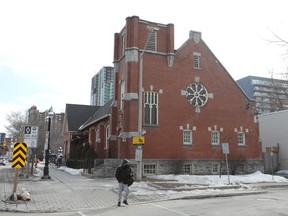Ottawa is one of the most attractive cities in Canada. Great cities protect and preserve the past while addressing future needs.

Article content
Preserving Ottawa’s built heritage is paramount to maintaining the city’s cultural identity and historical significance. The municipal government preserves noteworthy cultural heritage assets to celebrate, revitalize and enrich the community while contributing to its physical, social, cultural and economic advancement.
The city has more than 300 individually designated buildings and 20 heritage conservation districts, making Ottawa one of the most attractive cities in Canada. Residents and visitors alike appreciate the well-established architectural character of our neighborhoods, defined by many historic buildings of local and national significance that are linked to green spaces and modern amenities.
Advertisement 2
Article content
Article content
However, not all Ottawa heritage properties are maintained equally by their owners. Some fall into disrepair, resulting in “demolition due to neglect.” In recent years, the city has strengthened both its policy and enforcement tools to encourage and require property owners to maintain their heritage properties. These tools include the property standards statute, the Heritage Watch List, the city’s vacant unit tax and the vacant property permit program. Combined, these tools eliminate demolition as the only possible outcome of development.
The city’s planning policies balance the need to protect our built heritage with the need for development to address Ottawa’s housing shortage.
The issue is not “development versus heritage.” Instead, the city encourages developers to explore the potential of redeveloping heritage buildings as well as vacant land. City heritage staff are committed to working with property developers to encourage “adaptive reuse” to rejuvenate historic structures for new use by repurposing them into functional spaces such as housing, student residences, community centers or creative mixed-use venues.
Advertisement 3
Article content
There are several exceptional examples of adaptive reuse and preservation projects in Ottawa, including St. Charles Market in Vanier, a small-scale condominium development surrounding the original community church structure, and the upcoming restoration and integration of the historic Office of Ottawa Register on Nicholas Street. in a 288-unit residential rental building, currently under construction, that will be linked to the Rideau Center.
The city has also encouraged a development proposal at the corner of Laurier and Bronson avenues. That development will incorporate the historic Alexander Fleck House, a two-and-a-half-story red brick residential building built a century ago, into a new nine-story multi-unit building. These projects demonstrate that developers’ hands are not tied and that there is unlimited potential to transform heritage buildings into energy spaces for new homes.
The City understands that adaptive reuse projects are typically undertaken by commercial real estate developers due to their financial resources and construction experience. That’s why the city goes the extra mile to work with small-scale developers and nonprofit organizations to help them in their pursuit of adaptive reuse projects. For example, planning staff have committed to working with the congregation of the Église évangélique Baptiste in Lowertown to examine and promote the “adaptive reuse” of their historic Franco-Ontarian property. Staff have indicated to the council that they will work in good faith with any co-operative developer who demonstrates a genuine interest in continuing the successful refurbishment of historic structures to advance urban regeneration and create new housing.
Advertisement 4
Article content
Understanding that renovations require resources, the Built Heritage Committee earlier this year directed staff to evaluate the city’s heritage grant program based on its current guidelines, eligibility criteria and budget.
Despite the numerous challenges created by the radical changes to land use planning in Ontario initiated by Bill 23, the city will continue to seek a “made in Ottawa” solution to protect our built heritage. That solution will include a vision for the city that embodies both its historical legacy and its potential for future development. The city will pursue this vision comprehensively, making sure to work with the community to simultaneously address problem properties and neglectful demolition, while also assisting developers who demonstrate a real commitment to preserving, maintaining, investing in, and even expanding their properties. .
Great cities must protect and preserve the past while embracing the future. Ottawa’s planning and built heritage policies embrace this philosophy with the goal of maintaining, sustaining and building liveable, healthy communities for generations to come.
King Rawlson is a Rideau-Rockcliffe city councilor and chair of the Built Heritage Committee.
Recommended by Editorial
-

‘We’d be stuck’: Heritage designation would ruin church plans
-

Heritage committee approves plan to delist nearly 4,600 properties by year-end
Article content


